 “In the insect kingdom, about 98 per cent of insects are particularly specific about what they eat and these are the ones we are after.”
“In the insect kingdom, about 98 per cent of insects are particularly specific about what they eat and these are the ones we are after.”
Hugh Gourlay
Senior technician in weed biocontrol
Manaaki Whenua
Weeds take off because they arrive with no natural predators. That’s why they do so well.
Biocontrol works best against widespread weeds, and multiple agents are the way to go – together they can make more of an impact on a plant.
We don’t introduce biocontrol agents unless there is a real need for one. We start by surveying the proposed weed for control in as many places as possible within New Zealand. We look at what’s on the plant, and whether there are things that are likely to eat any introduced insects.
We also do surveys in the native countries. We see what insects attack the plant, what damage they are doing and at what time of the year. What’s eating the roots, stems, flowers, seeds? We’re looking for leaf, stem and root eaters, sap suckers, and flower and seed eaters. We’re checking the plants for gall formations, mite webs, leaf spots, stem dieback, necrosis of tubers and roots, rust on leaves, roots and stems or smut on flowerheads.
We find there are lots of species doing not much damage and some doing a lot. As an example, when I was in the United Kingdom in 1982 working on gorse, we found 126 different insect species attacking plants, which we whittled to five, and we still haven’t managed to tame this prickly pest. So, it can take a long time to find something we think we may be able to work with.
After we’ve identified insects, they’re brought into New Zealand to a containment facility. They can’t escape, and to ensure they don’t we’re audited by the Ministry for Primary Industries and the Environment Protection Agency.
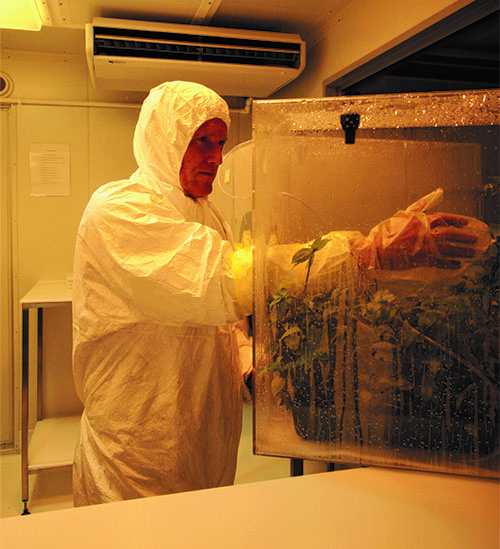
Hugh Gourlay working in the containment facility.
We start doing host testing to see if we have agents that will be effective.
People always ask: “What else are they going to eat? Look what happened when we introduced stoats, weasels, ferrets, possums, rabbits …”
But they’re animals, not insects. In the insect kingdom, about 98 per cent of insects are particularly specific about what they eat and these are the ones we are after.
Often, we know nothing about them, or little is known about them, so we learn a lot about their biology, particularly reproduction. We run very strong conservative tests. We put our insects in a cage and they are given the target plant and a lot of other plants. They’re given a choice, and this includes plants that are closely related to the target plant.
Then we give the insects no choice and see if they will lay eggs on the target plant. If they lay eggs and they hatch, we put the larvae on non-target plants to see if they eat them or die. If they do eat the non-target plants, lay eggs and go on to develop from eggs to adults then we test to see if they can form a population.
Once all the testing is done, we gain permission for release from the Environment Protection Authority. Worldwide, on average, it takes 14 years before a biocontrol agent is released. Here in New Zealand, it’s a very public process, with the decision based on risks, costs and benefits.
We have never got a no from the EPA. That’s because it’s a very long and expensive process to get here so we don’t apply for something that we know will eat native plants or something else of ecological or primary value. And all the science has been vetted by a lot of organisations.
We are the envy of other countries because it is such a legislated process. The EPA has 125 working days to make a decision. In Europe, 27 countries need to be involved and there are no timelines and no consistency of systems between the countries. We are very lucky to have such a robust system that is well regulated.
Once approved, we mass rear our agents and release them in nursery areas, working with regional councils. Regional council staff to do monitoring and assessment to see if the insects have established. Establishment is the hardest part of the project, but we have a 95 per cent success rate – the highest in the world.
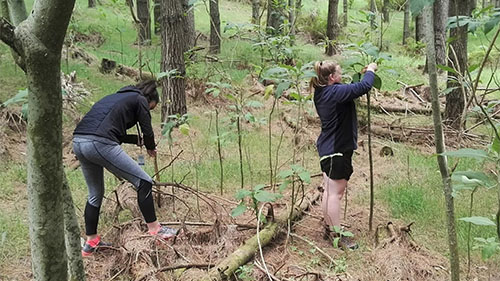
Monitoring within a nursery area of woolly nightshade lace bugs.
And it works.
Who knows what St John’s Wort looks like? Well, it was once one of the four worst weeds in New Zealand – the high country in the South Island used to be covered in it, but the lesser St John’s wort beetle mowed the stuff from top to bottom off the hill country and changed the face of farming there from the 1960s. The savings provided by St John’s wort biocontrol programme has more than paid for all weed biocontrol programmes in New Zealand to date!

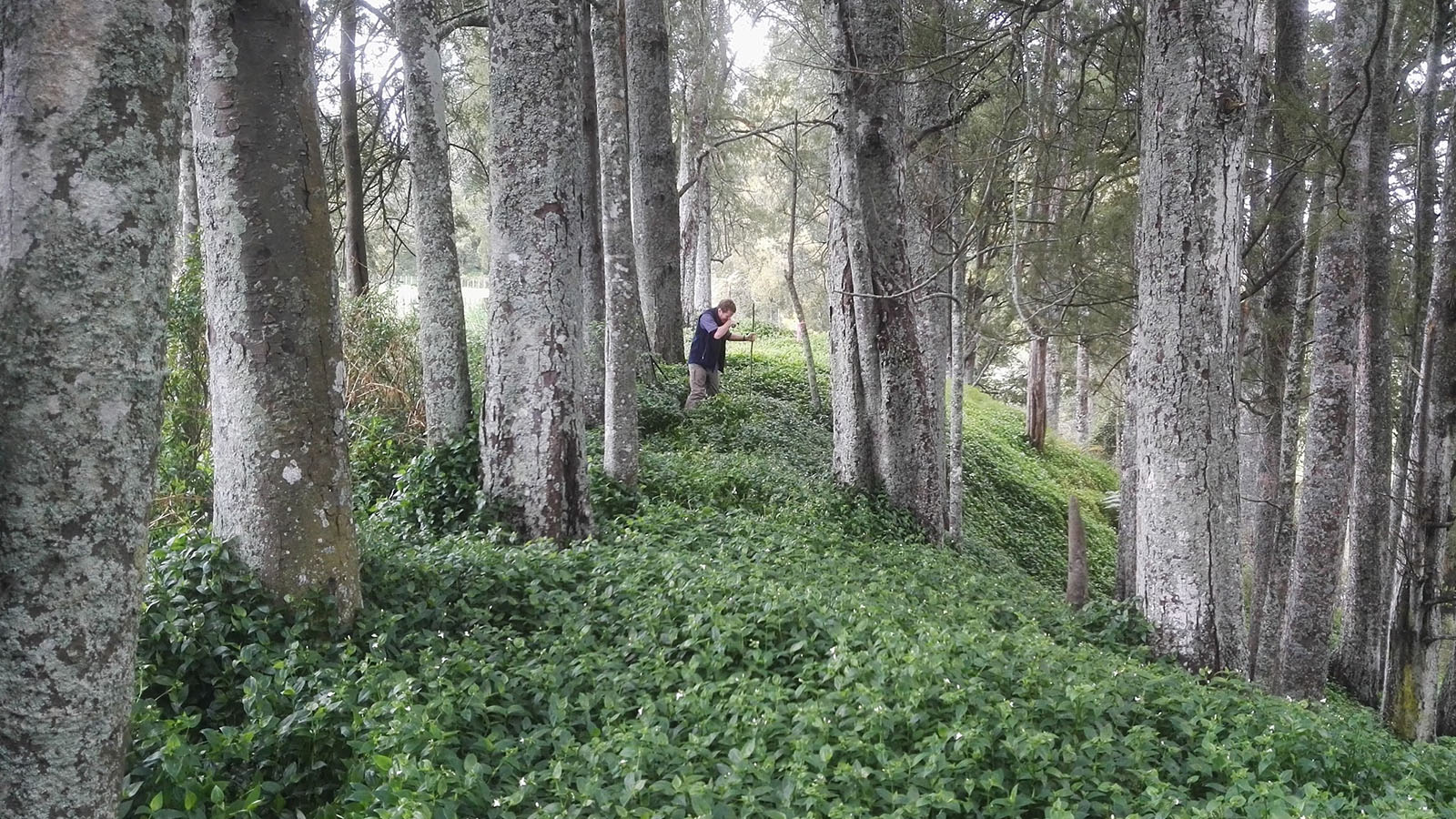
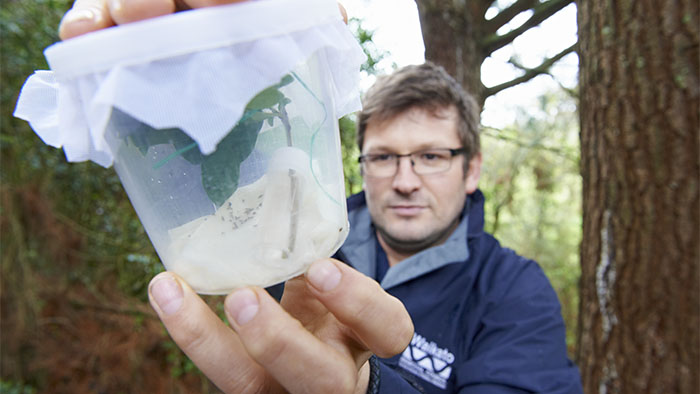
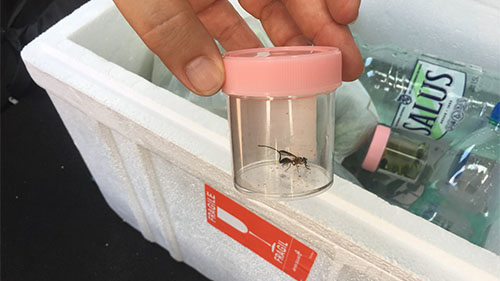

To ask for help or report a problem, contact us
Tell us how we can improve the information on this page. (optional)